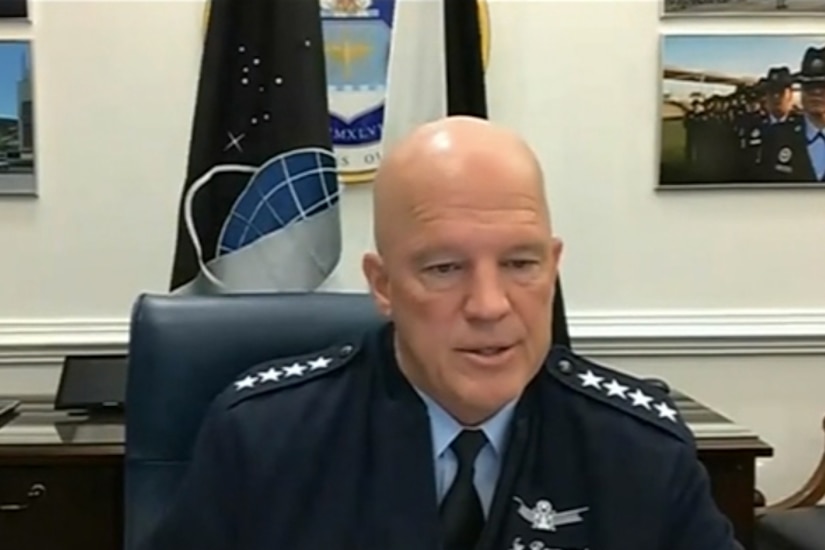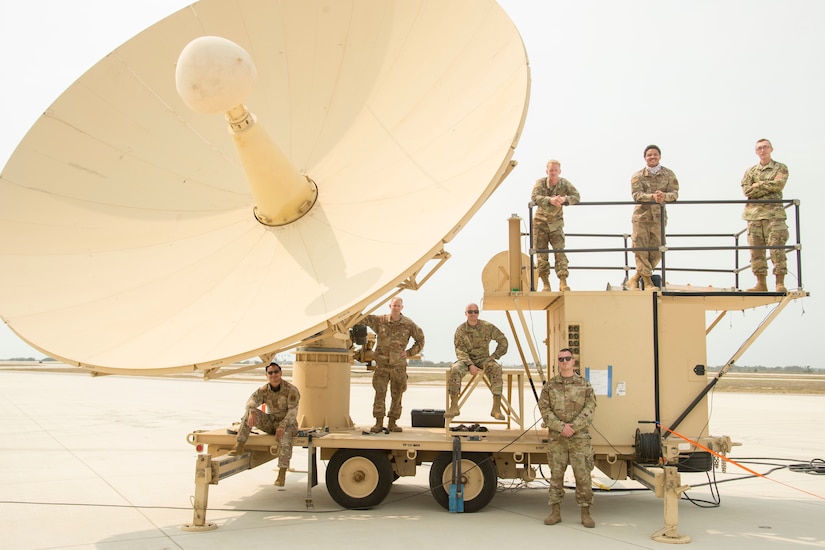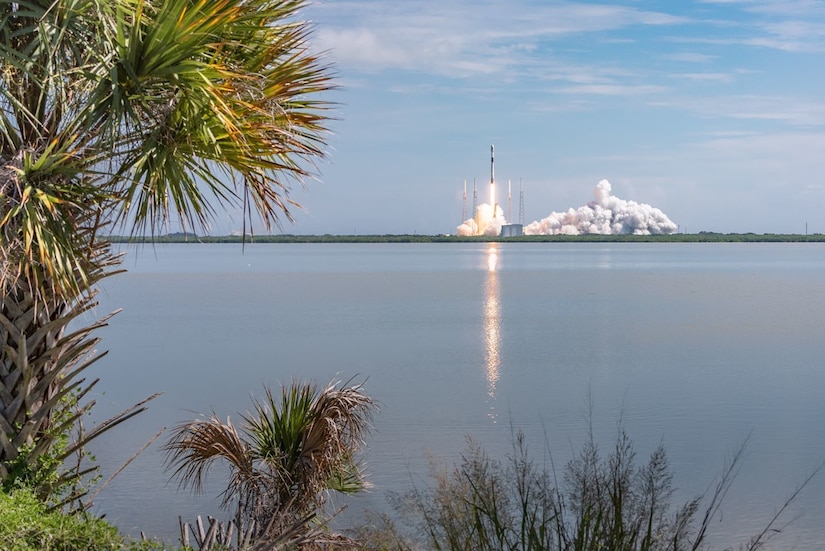Nov. 22, 2020 | , DOD News
The Space Force is building out the service with the goals of not only defending U.S. and partner assets in space, but also developing capabilities that might be needed in the future, said its leader, who also mentioned that young people are excited about joining the service.
Space Force Gen. John W. "Jay" Raymond, the chief of space operations and commander of the U.S. Space Command, spoke at a virtual event yesterday at the Halifax International Security Forum.

"We're building a Space Force not just for today, but for 100 years from now," he said. "We have to build a service that not only can do what it needs to do today, but also has the vision of where it might go."
In the coming decades, there could be a commercial space economy valued at over a trillion dollars a year, he said, and there's going to be a role for enhanced security in that domain.
"The role of the Space Force is to provide that stability across the domain so commercial companies and nations can flourish," he said.
Today, the service is largely focused on making sure it can provide joint and coalition partners space capabilities they have become to rely on heavily, he said.
Capabilities, he said, include satellites that provide communications, GPS, missile warning, situational awareness, weather updates; as well as space control and launch capabilities.


"Space underpins every bit of our national power. We are strongest when that space domain is stable, secure," he said.
The Space Force and its vision is attracting people to its ranks, he said, noting that he's talked to young people who are fired up about joining.
"Some of those young people are interested because they think they will be deployed to space. And it's actually refreshing to hear that in a future fight they may very well have that opportunity," he said.
Next month, Raymond mentioned that the first Space Force airman is scheduled to deploy to space when one of the Air Force astronauts on the next SpaceX launch will be sworn into the Space Force after reaching the International Space Station.
Those who want to join the Space Force need to be digitally fluent, he said.
"We're going to shift toward a digital engineering model," he said. "That means having a digital headquarters and having people on the force that are digitally fluent. And, developing this digital engineering and adopting this digital engineering standard is our model for all acquisitions going forward."

The types of jobs available in the Space Force, he said, are space operators, engineers, acquisition experts, cyber experts and some software programmers. The service will rely on the Air Force for support functions like civil engineering and security forces.
Besides building a digital force, Raymond said the service is working diligently to integrate with coalition partners. "I'm really proud of that line of evidence. It's probably the area that we've made the most significant gains over the last several years."
The Space Force also has strengthened its interagency partnerships, he said, including with NASA and the National Reconnaissance Office. Partnership with industry is also key.






